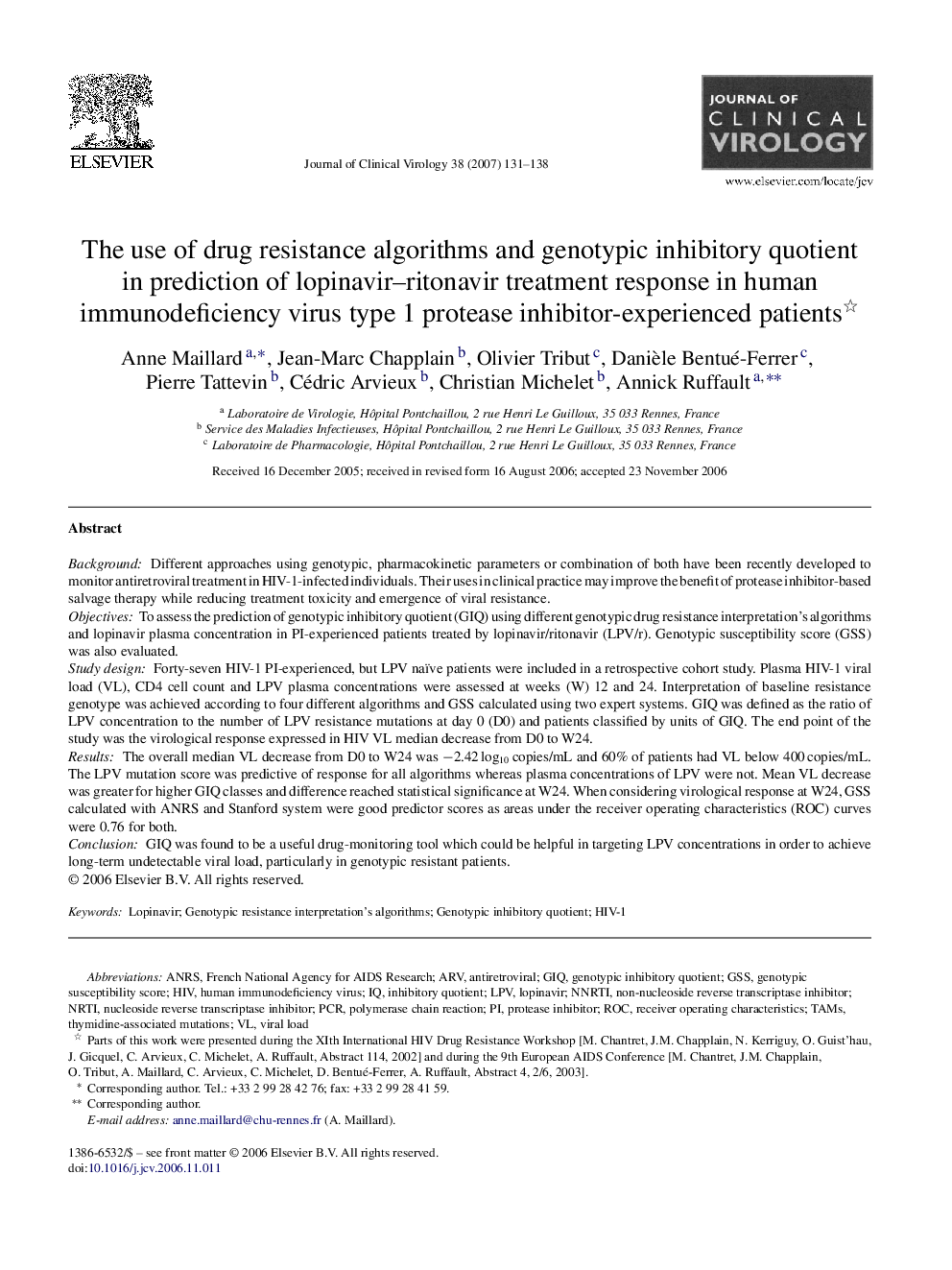| کد مقاله | کد نشریه | سال انتشار | مقاله انگلیسی | نسخه تمام متن |
|---|---|---|---|---|
| 3370869 | 1219094 | 2007 | 8 صفحه PDF | دانلود رایگان |

BackgroundDifferent approaches using genotypic, pharmacokinetic parameters or combination of both have been recently developed to monitor antiretroviral treatment in HIV-1-infected individuals. Their uses in clinical practice may improve the benefit of protease inhibitor-based salvage therapy while reducing treatment toxicity and emergence of viral resistance.ObjectivesTo assess the prediction of genotypic inhibitory quotient (GIQ) using different genotypic drug resistance interpretation's algorithms and lopinavir plasma concentration in PI-experienced patients treated by lopinavir/ritonavir (LPV/r). Genotypic susceptibility score (GSS) was also evaluated.Study designForty-seven HIV-1 PI-experienced, but LPV naïve patients were included in a retrospective cohort study. Plasma HIV-1 viral load (VL), CD4 cell count and LPV plasma concentrations were assessed at weeks (W) 12 and 24. Interpretation of baseline resistance genotype was achieved according to four different algorithms and GSS calculated using two expert systems. GIQ was defined as the ratio of LPV concentration to the number of LPV resistance mutations at day 0 (D0) and patients classified by units of GIQ. The end point of the study was the virological response expressed in HIV VL median decrease from D0 to W24.ResultsThe overall median VL decrease from D0 to W24 was −2.42 log10 copies/mL and 60% of patients had VL below 400 copies/mL. The LPV mutation score was predictive of response for all algorithms whereas plasma concentrations of LPV were not. Mean VL decrease was greater for higher GIQ classes and difference reached statistical significance at W24. When considering virological response at W24, GSS calculated with ANRS and Stanford system were good predictor scores as areas under the receiver operating characteristics (ROC) curves were 0.76 for both.ConclusionGIQ was found to be a useful drug-monitoring tool which could be helpful in targeting LPV concentrations in order to achieve long-term undetectable viral load, particularly in genotypic resistant patients.
Journal: Journal of Clinical Virology - Volume 38, Issue 2, February 2007, Pages 131–138